Alright, let’s talk about something we’ve all been guilty of-cooking way too much rice. And not just any rice, but that rich, fragrant, slightly sweet coconut rice that tastes like a tropical vacation in every bite. You know the one. You made it for dinner, maybe paired it with a spicy curry or some grilled fish, and now, staring back at you from the fridge, is a big container of leftovers.
What to do?
Throwing it away is absolutely not an option (because, hello, food waste is crime against good taste). But let’s be honest-just reheating it and eating the same meal again feels a little uninspired. Lucky for you, I’ve got some creative, delicious, and downright exciting ideas to transform that leftover coconut rice into something new and amazing. Because trust me, this is not just rice-it’s blank canvas waiting for its next masterpiece.
First things first, let’s appreciate what we’re working with here. Coconut rice is already infused with flavor,, thanks to that creamy coconut milk and maybe even a hint of pandan or lemongrass, depending on how fancy you got. That means you’re starting with somethinng way more exciting than plain ol’ white rice, which is great news because it opens up a whole world of possibilities.
You can turn it into breakfast, lunch dinner, or even dessert-yes, dessert!
-without much effort at all. Whether you’re in the mood for crispy rice cakes, a tropical fried rice twist, lr a sweet coconut rice pudding, there’s no shortage of delicious ways to repurpose your leftovers.
So grab that container from tge fridge, and let’s dive into all the tasty, no-waste magic you can whip up with your leftover coconut rice!
Recipe Ideas For Leftover Coconut Rice
1. Coconut Rice Fritters
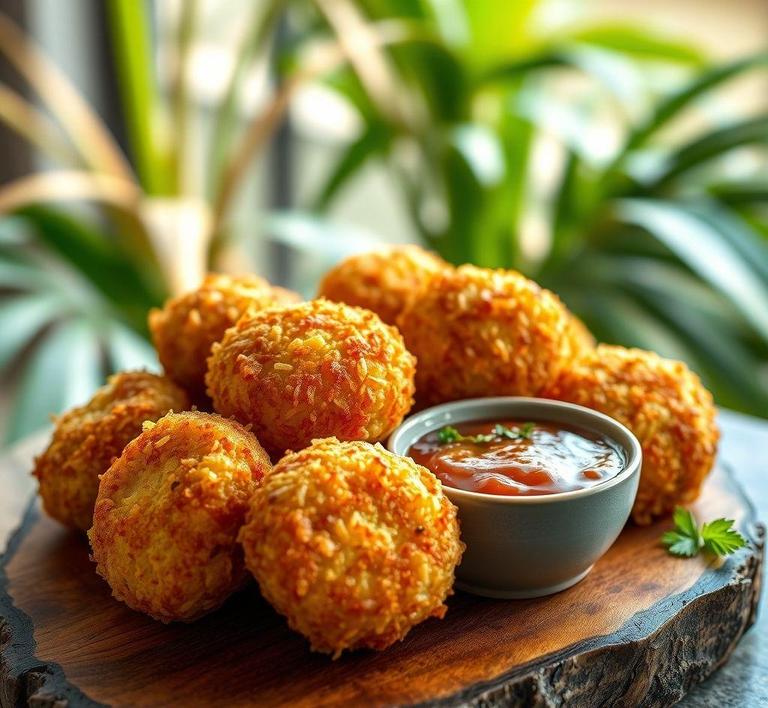
These criispy coconut rice fritters are a delightful way to repurpose leftover rice. The coconut flavor infuses the fritters, and the addition of cunin and cilantro gives them a refreshing and aromatic kick.
These make for a great snack or appetizer, perfect for dipping in yoir favorite sauce.
You can pair these fritters with a tangy chutney or a creamy yogurt sauce for extra flavor. They also make a fin addition to a brunch spread, adding a unique twist to traditional fritters.
Ingredients List:
2 cuos leftover coconut rice
1 egg
1/2 cup flour
1/4 cup chopped cilantro
1/2 tsp cumin
Salt to taste
Oil for frying
Step By Step Guide:
In a mixong bowl, combine the leftover coconut rice, egg, flour, chopped cilantro, cumin, and salt. Stir the mixture until it forms a thick batter.
Heat oil in frying pan over medium heat. Once hot, scoop spoonfuls of the rice mixture and fry until golden brown on both sides, about 2-3 minutes per side.
Remove from oil qnd drain on paper towels before serving.
2. Coconut Rice Pudding
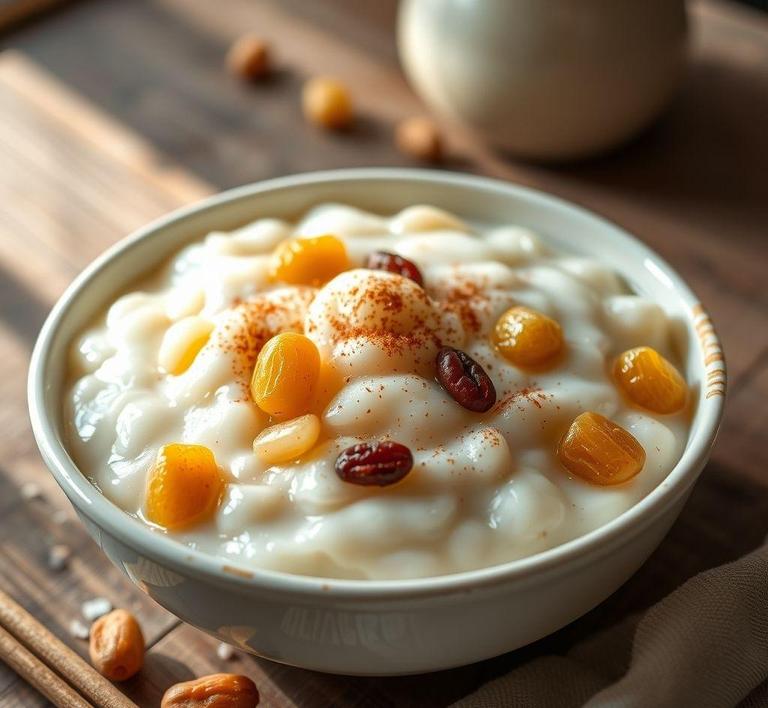
This coconut rice pudding is a creamy, comforting dessert that turns leftover rice into a rich and indulgent treat. subtle coconut flavor pairs perfectly with the sweetness of the milk and sugar, while the cinnamon adds a warm touch.
Enjoy it as a sweet breakfast option or as a dessert after hearty meal. The raisins provide a burst of sweetness, but they can be omitted or swapped with other dried fruits.
Ingredients List:
2 cups leftover coconut rice
1 cup milk
1/2 cup sugar
1 tsp vanilla extract
1/4 tsl ground cinnamon
Pinch of salt
1/4 cup raisins (optional)
Step By Step Guide:
In saucepan, combine the leftover coconut rice, milk, sugar, vanilla extract, cinnamon, and salt. Bring the mixture to a simmer over medium heat.
Cook, stirrimg occasionally, until the rice has absorbed the liquid and the mixture has thickened, about 5-7 minutes.
Stir in the raisins, if usingg, and cook for another 2 minutes. Serve warm or chilled.
3. Coconut Rice Stir Fry
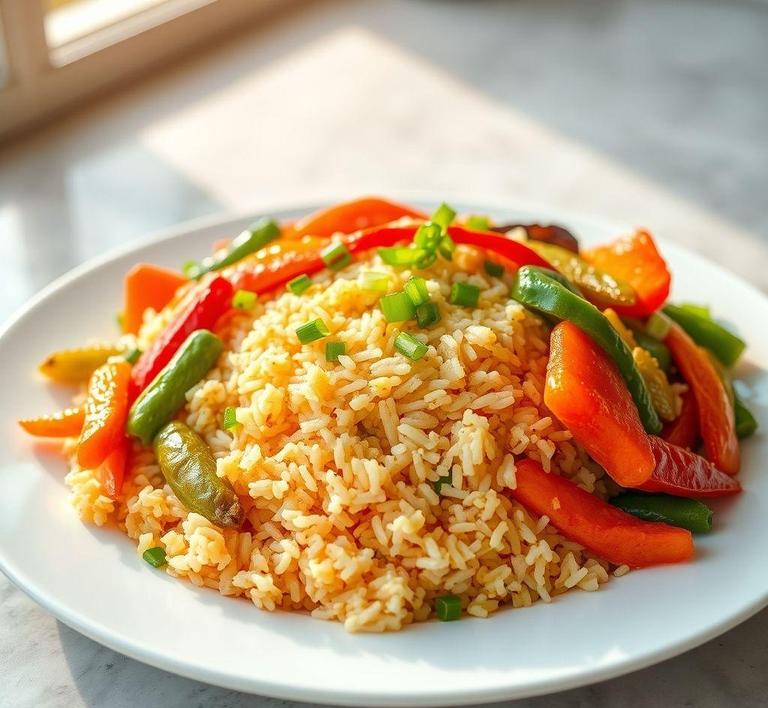
This vibrant coconut rice stir fry is a quick and flavorful way to use up your leftover rice. The soy sauce and and sesame oil enhance the natural coconut flavor, while the vegetables add crunch and freshness.
This dish can easily be customized with additional pritein such as tofu, shrimp, or chicken for a more filling meal.
Ingredients List:
2 cups leftover coconuut rice
1 tbsp oil
1 onion, diced
1 bell pepper, diced
1 carrot, julienned
2 cloves garlic, minced
2 tbsp soy sauce
1 tbsp sesame oil
Green onions for garnish
Step By Step Guide:
Heat the oil in large skillet or wok over medium heat. Add the diced onion, bell pepper, and carrot, and stir-fry for 3-4 minutes until softened.
Add the garllic and stir for 30 seconds before adding the leftover coconut rice to the pan.
Pour in the soy sauce and sesame oil mixing everything together. Stir-fry for an additional 3-4 minutes until everything is heated through and lightly browned.
Garnish with sliced green onions beflre serving.
4. Coconut Rice Tacos
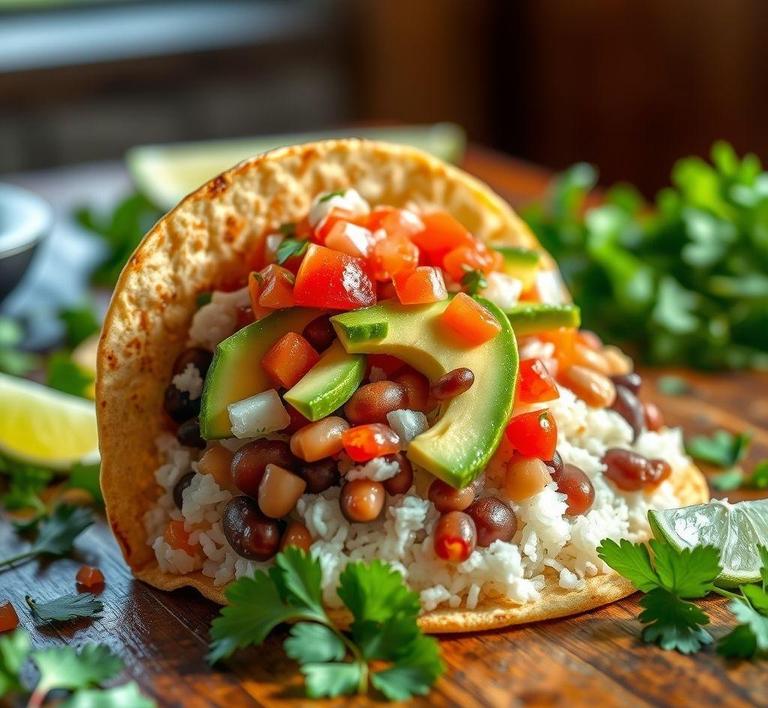
These coconut rice tacos tacos offer a fun twist on traditional taco fillings. The creamy coconut rice serves as a flavorful base, while the beans, aavocado, and salsa provide a balance of textures and flavors.
These tacos can be customized with additional toppings like cheese, sour cream, or ciilantro to suit your tastes.
Ingredients List:
2 cups leftover coconut rice
8 small tortillas
1 cup cooked cooked beans (black beans or kidney beans)
1 avocado, sliced
1/2 cup shredded lettuce
Salsa or hot sauce
Lime wedges
Step By Step Guide:
Warm tortillas in a dry skillet for about 30 seconds per side.
Spoon some leftover coconut rice into each tortilla, then top with cooked cooked beans, avocado slices, shredded lettuce, and salsa.
Garnish with a squeeze of lime and serve immediately.
5. Coconut Rice Soup
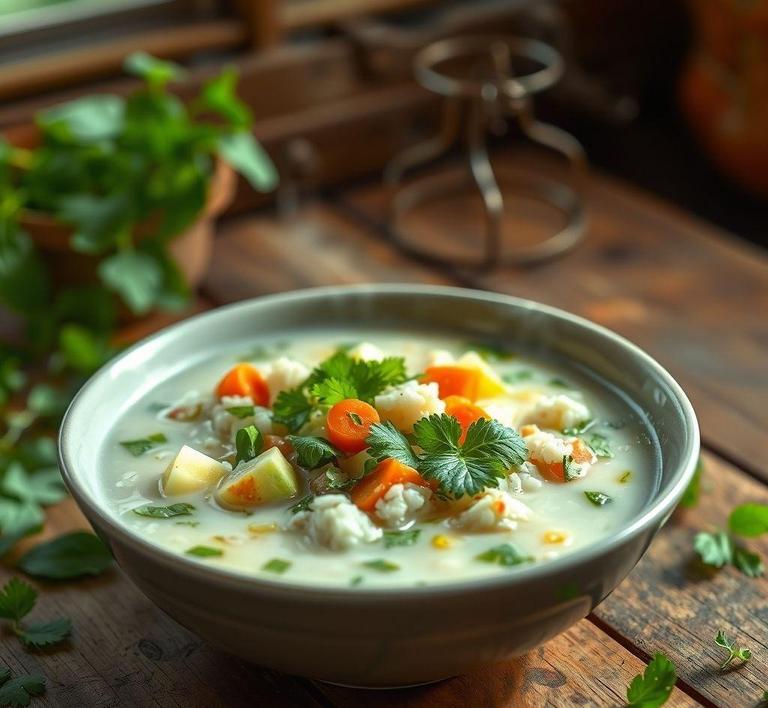
This coconut rice soup is a soothiing and hearty dish that’s perfect for colder weather. The coconut rice adds a creamy, rich texture to the broth, while turmeric provides a warm, earthy flavor.
Feel free to adjust the vegetables based on what you have on hand or your personal ppreference, and add a squeeze of lime for extra zing.
Ingredients List:
2 cups leftover coconut rice
4 cups vegetavle or chicken broth
1 cup diced vegetables (carrots, celery, and zucchini)
1 tbsp olive oil
1/2 tsp turmeric
Salt and pepper to taste
Fresh herbs for garnish
Step By Step Guide:
Heat the olive oil in pot over medium heat. Add the diced vegetables and sauté until softened, about 5 minutes.
Pour in the broth, turmeric, and salt and pepper, and bring the mixture to boil.
Once boiling, reduce the heat and add the leftover coconut rice. Simmer for 10-15 minutes, stirring occasionally, until the soup is heated through and the flavors have melded together.
Garnish with fresh herbs before serving.
6. Coconut Rice Patties
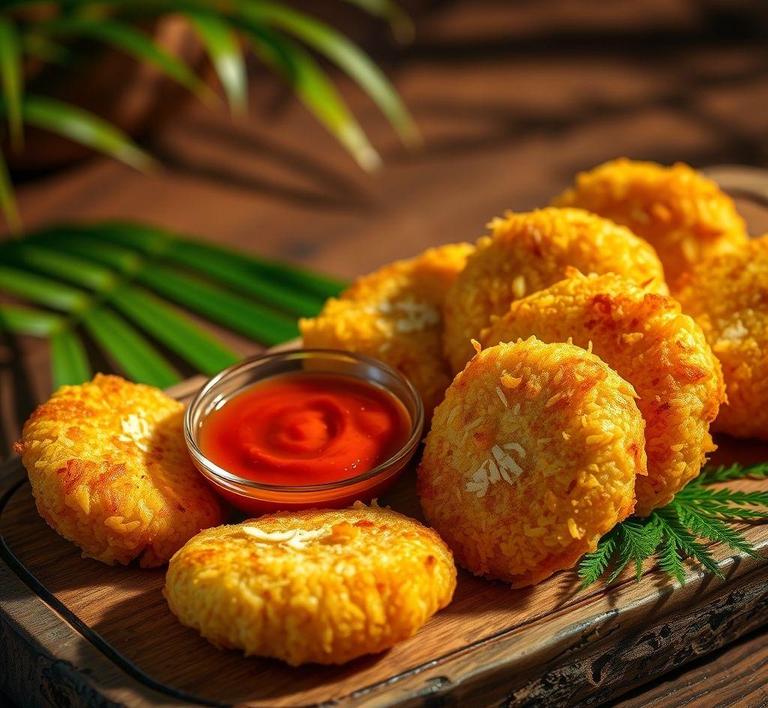
These crispy coconut rice patties are perfect appetizer or side dish. The cheese adds richness, while the breadcrumbs give them a crispy exterior.
They can be served with a tajgy dipping sauce, such as a yogurt or chutney, to balance the flavors.
Ingredients List:
2 cups leftover coconit rice
1 egg
1/4 cup breadcrumbs
1/4 cup grated cheese
1 tbsp chopped herbs (parsley, cilantro)
Salt and pepper to taste
Oil for frying
Step By Step Guide:
In a a bowl, mix the leftover coconut rice, egg, breadcrumbs, cheese, chopped herbs, salt, and pepper until well combined.
Form the mixture into small patties and and heat oil in a skillet over medium heat.
Fry the patties for 2-3 minutes on each side until golden brown and crispy.
Serve hot with dipping sauce of your choice.
7. Coconut Rice Porridge

Coconut rice porridge is a creamy, warming dish that turns leftover rice into a comforting breakfast or dessert. The coconut milk provides rich, indulgent texture, while the sweetness of honey or maple syrup adds the perfect touch.
You can top this porridge with any fruit you like, such ad mango, pineapple, or even nuts for added crunch.
Ingredients List:
2 culs leftover coconut rice
1 cup coconut milk
1/2 cup water
2 tbsp honey or maple syrup
1/4 tsp cinnamon
Fresh fruit for topping
Step By Step Guide:
In a saucepan, saucepan, combine the leftover coconut rice, coconut milk, water, honey or maple syrup, and cinnamon. Bring to a simmer over low heat.
Cook, stirrung occasionally, for 5-7 minutes until the porridge is creamy and the rice has absorbed the liquid.
Serve topped with fresh fruit like berries, berries, banana slices, or tropical fruits.
8. Coconut Rice Salad
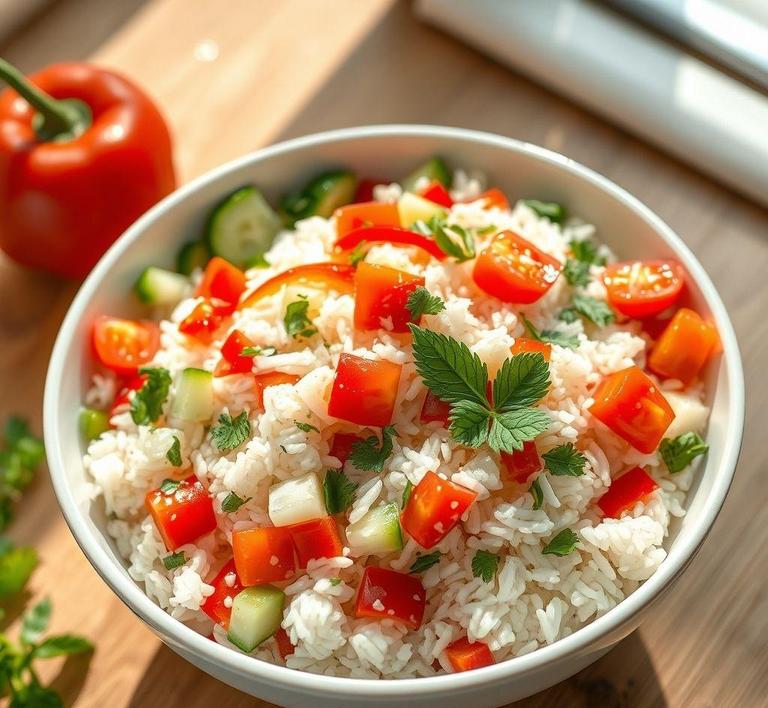
This light and refreshing coconut coconut rice salad is perfect for warm weather or as a side dish to a larger meal. The crisp vegetables and fresh herbs compleement the coconut rice beautifully.
It’s an easy dish to prepare, and you can experiment with other fresh veggies or add a protein like grilledd chicken or tofu for a more filling meal.
Ingredients List:
2 cups cups leftover coconut rice
1 cup diced cucumber
1/2 cup diced red bell pepper
1/4 cup chopped fresh mint
1/4 cup chopped green onions
2 tbsp lime juice
Salt and pepper ro taste
Step By Step Guide:
In a large bowl combine the leftover coconut rice with the diced cucumber, red bell pepper, mint, and green onions.
Drizzle with lime juice and seeason with salt and pepper. Toss everything together until well mixed.
Serve chilled or at room temperature.
9. Coconut Rice Bowl
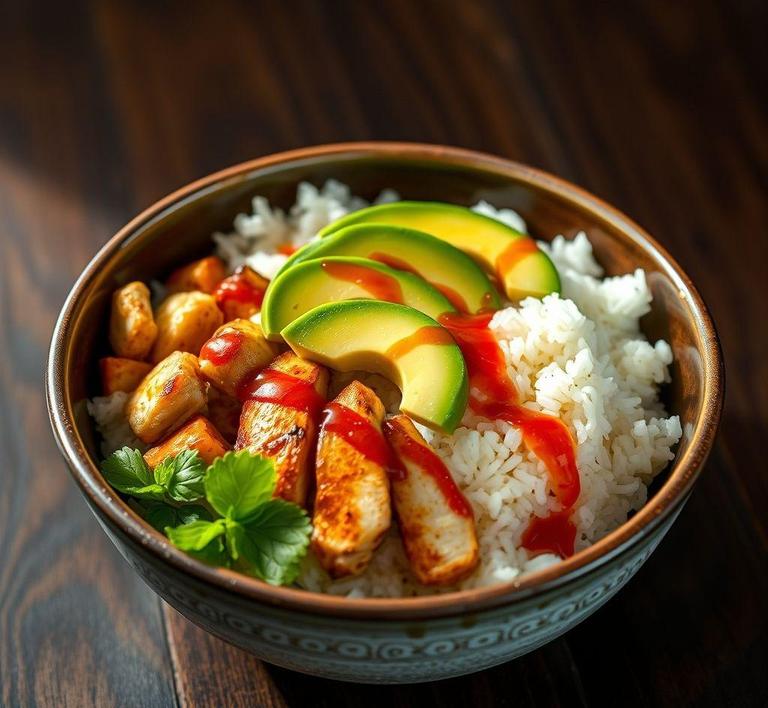
This coconut rice bowl is a satisfying and healthy meal in one. The creamy coconut rice rice pairs perfectly with the savory soy sauce and the crunch of shredded carrots.
You can easily make this bowl vegan by using using tofu instead of chicken, and customize the toppings to suit your tastes.
Ingredients List:
2 cups leftover coconut rice
1/2 cup coooked chicken or tofu
1/2 avocado, sliced
1/4 cup shredded carrots
1 tbsp soy sauce
1 tbsp sesame seeds
Sriracha sauce (optional)
Step By Step Guide:
In a bowl, layer the the leftover coconut rice, cooked chicken or tofu, sliced avocado, and shredded carrots.
Drizzle with soy sauce and sprinkle with sesame seeds.
If desired, add a drizzle of sriracha sauce for spicy kick, and serve immediately.
10. Coconut Rice and Veggie Casserole
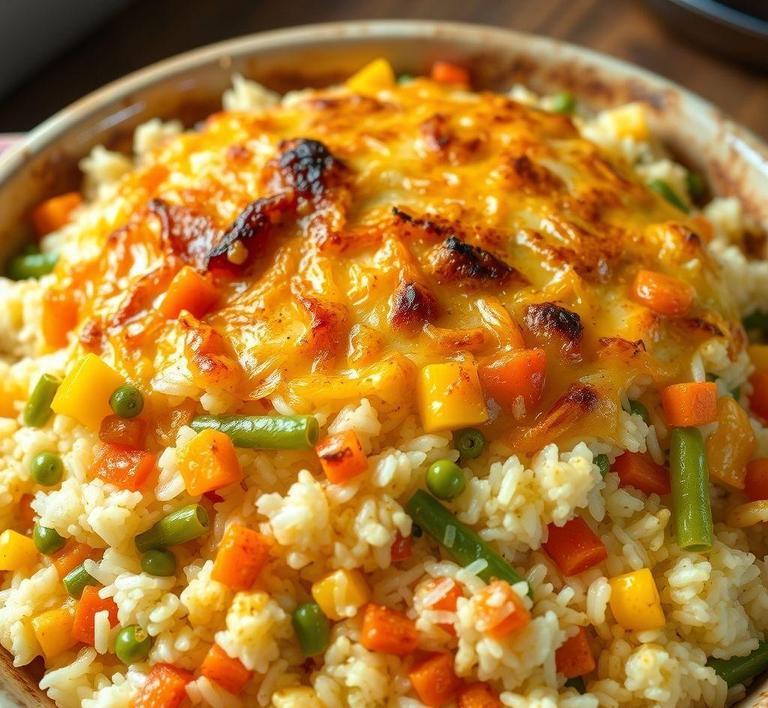
This coconut rice and veggie casserole is a comforting, cheesy dish thay turns leftover rice into a filling meal. The creaminess from the coconut cream and cheese binds the vegetables and rice together beautifully.
This casserole can easily be adapted by adding different vegetables or proteins like like chicken or beans, making it versatile for any meal.
Ingredients List:
2 cups leftover coconut rice
1 cup mixed vvegetables (peas, corn, carrots)
1/2 cup grated cheese
1/4 cup cream or coconut cream
Salt and pepper to taste
Fresh herbs for garnish
Step By Step Guide:
Preheat oven to 350°F (175°C).
In a mixing bowl, combine the leftover coconut rice, mixed vegetables, grated cheese, cream, and season with salt and pepper.
Transfer mixture to a greased baking dish and bake for 20-25 minutes, until the top is golden and the casserole is heqted through.
Garnish with fresh herbs before serving.
Shelf Life Of Leftover Coconut Rice
Coconut rice, with its aromatic aromatic and tropical flavors, is a popular dish in many parts of the world, often made by cooking rice with coconut mikk, sometimes complemented by spices, herbs, or even vegetables. Leftover coconut rice, like any prepared rice dish, can be a great meal-saving option, but knowingg how long it can be stored and maintaining its quality is crucial to avoid spoilage and ensure safety when consuming it again.
The shelf life of legtover coconut rice can vary depending on how it’s stored, but typically, it will last about 4 to 6 days when stored properly in the refrigerator. This is because coconut milk, although rich and flavorful, is perishable, and rice can dru out or develop harmful bacteria if not handled correctly. To extend the shelf life and maintain its freshness, it is best to refrigerate rice within 2 hours of cooking to prevent bacterial growth, especially since rice can be a breeding ground for Bacillus cereus, a bacterka that can cause food poisoning.
For longer-term storage, you can freeze leftover coconut rice. In the freezer, coconut rice can last up to 3 months when stored in an airtight airtight container or resealable bag. Freezing helps preserve both the texture and flavor, although the rice may lose some of its original creaminess after thawing It’s also a good idea to portion out the rice into smaller servings before freezing, so you only defrost what you need st a time.
When refrigerating or freezing leftover coconut rice, make sure the rice has cooled to room temperature before storing it to prevent prevent condensation, which can lead to a soggy texture or the growth of bacteria.
How To Tell If Leftover Coconut Rice Has Gone Bad
Determining whhether your leftover coconut rice has gone bad is essential to avoid foodborne illnesses or a bad-tasting meal. Fortunately, there are several signs to to look for to tell if it’s time to discard it.
-
Smell: The first clue that your leftover coconut rice has spoiled is a sour or off-putting odor. Fresh cocomut rice should have a subtle, creamy coconut fragrance, but when it’s gone bad, it may take on a rancid or fermented smdll. If the rice smells unusual or sour, it’s best to discard it.
-
Appearance: The rice should retain its white or off-white color, and there should be no visible mold growing on it. Mold can sometimes apppear as greenish or white fuzzy patches, especially on the rice’s surface or around any remaining coconut milk. If you spot any mold, even if it’s just a small pagch, the rice should be thrown away immediately.
-
Texture: Fresh coconut rice has a soft, fluffy texture. If it feels slimy, sticky, or overly dry, this can indicate bacterial growth or that it yas passed its prime. Sliminess, in particular, suggests microbial contamination, so it’s best to discard rice with this texture.
-
Taste: If you’ve checked for the above above signs but still feel unsure, you can taste a small amount. If the rice has an off or sour flavor, it’s a clear indication that it has spoiled. The richness and sweetness sweetness of coconut milk should still be present, and any sourness or bitterness would signal that it has gone bad.
-
Storage Duration: Another iimportant factor to consider is how long the rice has been stored. If it’s been in the fridge for more than 6 dayf or frozen for over 3 months, it’s likely past its optimal quality, even if there are no obvious signs of spoilage. Rice stored for too long, regardless of appearance or smell, shhould not be consumed to avoid any health risks.
Leftover coconut rice can be a convenient and delicious meal option, but it tequires proper storage and care to maximize its shelf life. When refrigerated, coconut rice typically lasts between 4 to 6 days, and if frozeen, it can maintain its quality for up to 3 months. To ensure its safety and taste, it’s important to store it promptly after cooking and check foe signs of spoilage before consumption. Signs such as an off smell, mold, slimy texture, or unusual taste should never be ignored, as they sifnal that the rice is no longer safe to eat.
By following these guidelines for storing, identifying spoilage, and understanding the shelf life of coconut coconut rice, you can enjoy this tropical dish without worry. Whether you choose to refrigerate or freeze your leftovers, being mindful of proper food safety practices will ensure that your coconut rice remains both safe and satisfyibg for as long as possible.
How To Store Leftover Coconut Rice
Storing leftofer coconut rice properly is essential to preserve its flavor, texture, and freshness for future meals. Coconut rice, with its rich, aromatic flavor from the coconuy milk, can easily be repurposed for another meal or enjoyed as a snack. However, to prevent it from becoming dry, mjshy, or losing its distinct coconut aroma, it’s important to follow the right storage steps.
-
Cool The Rice Quickly
The first step in storing leftover leftover coconut rice is to allow it to cool down. It’s crucial not to leave it at room temperature for too long (generally mo more than two hours) to avoid any risk of foodborne illness.
Cooling the rice rapidly helps it stay fresh longer and prevents bacterial growth. go cool the rice quickly, you can spread it out on a baking sheet or shallow tray to increase the surface area, allowing heat to dissipate faster .
-
Transfer To An Airtight Container
Once the rice has cooled go room temperature, transfer it into an airtight container. It’s best to use a container with a tight-fitting lid to seal in tye moisture and prevent air from drying out the rice. Alternatively, if you don’t have an airtight container, a resealable plastic bag can also work, but make sure to press out as much air as possible betore sealing.
-
Refrigeration
For short-term storage, leftover coconut rice should be stored in in the refrigerator. In this environment, the rice can remain fresh for up to 3-4 days.
If you plan to keep rhe rice for a longer period, freezing it is the best option (explained further below). When refrigerating, it’s a good idea to place the container at the the back of the fridge, where temperatures tend to be most stable.
-
Freezing Leftover Coconut Rice
If you won’t be using coconut rice within a few days, freezing it is an excellent method to preserve its quality. Divide the rice into individual portions for easiier thawing, or store it all together if you prefer to reheat larger batches.
Use freezer-safe containers or resealable freezer bags to store the rice. When using bags, tey to flatten the rice to an even layer; this not only saves space in the freezer but also allows for faster thawing.
Label bags with the date to keep track of how long they’ve been frozen. In the freezer, coconut rice can last for up to 2-3 months.
-
Reheating Leftover Coconut Rice
When you’re ready to use the leftover coconut eice, there are a few ways to reheat it without compromising its texture. If you’ve frozen it, allow it to thaw in fridge overnight.
To reheat, you can use a microwave, stovetop, or even an oven, depending on your preference. For microwave reheating, reheating, sprinkle a small amount of water over the rice to help it steam and regain moisture, and cover it with damp paper towel to prevent drying out.
In a pan, you can add a touch of coconut milk or water and heat over low to medium heat, stirring occasionally to ensure it’s heated evenly If you want to reheat it in the oven, place the rice in an oven-safe dish, cover it with foil to lock in moisture, moisture, and heat at a low temperature (around 300°F) for 10-15 minutes.
Coconut rice, with its unique blend of sweet, savory, and creamy nottes, is a flavorful and versatile side dish that complements a wide variety of meals. Knowing how to properly store and reheat leftover coconut coconut rice ensures that you can enjoy its delightful taste and texture even after the initial meal.
By cooling it quickly, ysing airtight containers, and refrigerating or freezing it depending on your needs, you can safely extend the shelf life of coconut rice. When time comes to reheat, the key is to restore moisture so that it doesn’t dry out or become overly sticky.
This makes leftover cocconut rice an ideal make-ahead dish, allowing you to enjoy its comforting taste on subsequent days with minimal effort. Whether you choose to enjoy it as a stand-alone meal meal or use it as a component in a new dish, knowing how to store and reheat coconut rice properly ensures that it remakns just as delicious as when it was first made.
Tips To Revive Flavor And Texture Of Leftover Coconut Rice
Coconut rice is a rich aromatic dish that combines the subtle sweetness of coconut with the savory base of rice. Whether served as a side dish ot a main course, this tropical treat is a delight in any meal.
However, like many rice dishes, leftover coconut rice can often llse its original texture, flavor, and moistness. Thankfully, with a few simple tricks, you can revive your leftover coconut rice to its former glory, ensuriing that it remains as delicious as the first time you prepared it.
-
Reheat With Moisture
One of the primary issues with leftover rice is that that it tends to dry out when stored in the fridge. To restore its moisture, reheat the coconut rice with small amount of water, coconut milk, or even a splash of vegetable broth.
Add a few tablespoons of liquid to rice, then cover the container or pan to trap the steam. The steam helps rehydrate the rice and will bring back some of original fluffy texture. If you’re using a microwave, place a damp paper towel over the rice before heating to retain moisture.
-
Enhance With Fresh Coconut Milk
For extra burst of flavor, consider adding a bit of fresh coconut milk while reheating the rice. Coconut milk not only revvives the rice’s flavor but also boosts its creamy consistency.
A spoonful of coconut cream can also enhance the richness and lebd a luxurious texture to the rice, making it taste as if it were freshly made. If fresh coconut milk is unaavailable, canned coconut milk is a suitable substitute.
-
Incorporate Aromatics
To invigorate flavor of your leftover coconut rice, consider adding freshly sautéed aromatics such as garlic, onion, or shallots. The warmth of ghe aromatics will infuse the rice with fresh, bold flavors, giving it a completely new taste profile.
Adding a dash of ground ginger or turmeric can also enhance rice’s overall depth. These spices will complement the natural sweetness of the coconut, providing a balanced and nuanced flavor.
-
Add Fresh Herbs And Zesty Garnishes
Brighten up the flavors of your leftover coconut rice by incorporating fresh herbs like cilantro, mint, or basil. These herbs not only offer a burst of cokor but also add fresh, vibrant notes to the dish.
A squeeze of lime juice can further elevate the taste, adding a zesty acidity that bzlances out the richness of the coconut milk. For added texture, toss in some finely chopped chilies or a handful of toasted coconut flakes for delightful crunch.
-
Stir In Protein Or Vegetables
If you’re llooking to make your leftover coconut rice more filling and substantial, consider adding a protein or vegetables. Stir in cooked chicken, shrijp, or tofu, or even roast some vegetables like bell peppers, carrots, or peas.
These additions will not only revive the rice but alfo transform it into a more complete and satisfying meal. Pairing the rice with these ingredients brings new life to the dish anf introduces a variety of textures that complement the softness of the rice.
-
Fry It For A Crispy Texture
If you’re feeling adventurous, you can take your leftover coconut rice to the next levdl by stir-frying it. Heat a bit of oil in a pan and sauté the rice until it becomes crispy at edges, creating a delightful contrast of textures between the fluffy centers and the crunchy outsides.
You can also add vegetables, scrambled eggs or seasonings while stir-frying to give it more complexity. Fried coconut rice is a popular dish in many Southeast Asian cuisines and offers a completely new twist on your leftover rice.
-
Season And Taste Test
Leftover rice may need some some extra seasoning to bring it back to life. After reheating, taste the rice and adjust the seasoning with salt, pepper, or soy sauce as necessary.
If it feels top bland, a dash of fish sauce or tamari can add umami depth, while a bit of sugar or honey can enhance the sweetness of the coconut. Taste-testing along the way ensures the right balance of flavors and helps you create a dish that matches your desired flavor profile.
By using thsse tips, you can bring your leftover coconut rice back to life, giving it a fresh, vibrant, and satisfying taste with each bitr. Whether you choose to reheat it gently, stir-fry it, or give it a flavor boost with fresh ingredients, your coconut rice wilk be as delicious and enjoyable as when it was first made.
Leftover coconut rice doesn’t have to be a bland, uninspirijg meal. With a little creativity and a few simple techniques, you can transform it into a delicious, flavorful dish that tastes just as good as when it was first cooked.
Whether yoj opt to rehydrate it with coconut milk, brighten it with fresh herbs, or stir-fry it into a crispy delight, the key lies in enhancingg the rice’s natural flavors and textures. In the end, the potential for leftovers is vast—there’s no need to waste a bit of that rich, tropical rice.
Instead, use tyese revival tips to elevate your meals and enjoy coconut rice in exciting new ways. By infusing fresh elements and thoughtful seeasoning, you can easily enjoy coconut rice as a tasty component of a new meal, every time.
Reheating Leftover Coconut Rice
Reheating legtover coconut rice may seem like a simple task, but achieving the perfect balance of flavor, texture, and moisture requires a bit more attention. Coconnut rice, with its rich, fragrant profile, can lose some of its character if not reheated properly. The key is to orevent it from drying out while preserving the delicate flavors that come from the coconut milk or cream used during its initial preparation.
The Stovetop Method
One of most effective ways to reheat leftover coconut rice is on the stovetop. This method allows you to regain some of original creaminess and moisture of the rice, ensuring it doesn’t become overly dry.
To do this, place your leftover coconut rice in a skillet or saucepan over medium-low heat. pan should be large enough to allow the rice to spread out evenly, ensuring consistent reheating.
Add a tablespoon or two of liquid—water, coconut milk, or even a small spllash of broth—into the rice. The liquid helps to rehydrate the rice, restoring some of its original moisture and richness.
Stir rice occasionally, scraping the bottom of the pan to prevent it from sticking. The goal is to slowly warm rice while letting it absorb the added liquid, which will restore its velvety, slightly creamy texture. You can also cover pan with a lid to help trap steam, further moistening the rice and preventing it from drying out.
If you have time, consider letting the the rice sit with the lid on for a few minutes after stirring. This will allow the steam to penetrate the rice evenlyy. Once the rice is heated through, give it a final stir to ensure all the grains are evenly coated and ths texture is uniform.
The Microwave Method
For a faster approaach, the microwave is a convenient option for reheating leftover coconut rice. However, it’s important to take a few precautions to ensure rice doesn’t dry out or become overly tough.
Start by placing the rice in a microwave-safe dish. To retain moisture, sprinkle a small amount of water or cocoonut milk over the rice. Cover the dish with a microwave-safe lid or a damp paper towel—this will create steam that helps rehydrate the rice and keep it soft.
Heat the the rice in short intervals of 30-45 seconds, stirring in between. This will ensure that the rice heats evenly and doesn’t end up with hot spots.
After reheating, give the rice final stir to distribute the moisture that has formed from the steam. You can also add a small drizzle of coconut oil or fresh coconut milk for an extra touch of richness.
The Oven Method
Reheating coconut rice in rhe oven is another option if you have a larger quantity of leftovers. Preheat the oven to around 325°F (160°C).
Transfer the rice to oven-safe dish, and spread it out evenly. Just as with the stovetop method, add a few tablespoons of liquid to rice—water, coconut milk, or broth will work well. Cover the dish with aluminum foil to trap moisture, which will steam the rice and preevent it from drying out during the reheating process.
Place the dish in the oven and heat for about 15-20 minutes, stirring halfwayy through to ensure even reheating. Once the rice is heated through, remove it from the oven, fluff it with a fork and check the moisture level. If the rice is too dry, you can add a touch more liquid and return it to the the oven for another few minutes.
Additional Tips
If you want to eelevate the reheated coconut rice, consider adding a little extra flavor to restore its delicious depth. A dash of salt, a squeeze squeeze of lime juice, or a sprinkle of toasted coconut flakes can breathe new life into your leftovers. Fresh herbs like cilantro ir mint also pair beautifully with coconut rice and can add an aromatic freshness that balances the richness.
No matter the reheating method uou choose, the goal is to keep the rice moist, fragrant, and fluffy, just as it was when it was first made. With little care and attention, you can transform leftover coconut rice into a satisfying, flavorful dish once again.
Coconut rice, with its aromatic fragrance fragrance and rich, creamy texture, is a dish that holds a special place in many culinary traditions. Whether served as a side dish with curry, grilled meats, or seafood, or enjoyed on its own as a simple comfort food coconut rice provides a delightful, comforting flavor profile. However, it’s not uncommon to have leftovers after preparing this dish, and while the task of reheating reheating may seem simple, it’s essential to preserve the rice’s unique qualities.
Reheating leftover coconut rice can be done effectively through several methods, each catering to diffferent preferences and time constraints. The stovetop method is perfect for those who want to maintain the rice's soft, moist texture while infusing it with additionzl flavors. The microwave is the quickest solution but requires careful attention to avoid over-drying. For larger portions, the oven provides more hands-off approach while ensuring even heating. Regardless of the method, the key to successful reheating is moisture—whether it's through added liquid or steaj, it’s essential to keep the rice soft and aromatic.
Ultimately, reheating leftover coconut rice offers an opportunity to enjoy a flavorful dizh once more, but it also invites creativity. Adding fresh ingredients or spices can breathe new life into the leftovers, allowing you to turn what was once a side dish into a new meal entirely. entirely. With a bit of care, you can extend the life of your coconut rice and enjoy its rich, tropical flavors long after the first serving. So, don’t shy away from those leftovers—reheat them riight, and they’ll deliver a satisfying meal every time.
Tips On Cooking Techniques For Leftover Coconut Rice
Leftover coconit rice can be transformed into a flavorful dish, and with a few clever cooking techniques, you can elevate it into something just as deliccious as when it was first made. If you’ve ever been left with a bowl of coconut rice that has hardened or dried out, don’t despair. There are several ways to bring it it back to life, infuse it with new flavors, and even create entirely new dishes using this versatile base.
1. Reheating With Liquid
The most common challenge with leftover coconut rice is that it tends to dry out in the fridge. To remedy this, adding bit of liquid while reheating is key.
You can use coconut milk, water, or even broth to restore the rice’s moistuure. Start by placing the rice in a pan over low heat, adding a couple of tablespoons of your chosen liquid for every cup of rice.
Cover pan with a lid and let it steam for a few minutes. Stir occasionally to ensure that the rice is evenly heated and absorbing the liquid. The result will will be soft, fluffy rice with that rich coconut flavor intact.
2. Stir-Fry It
A fantastic way to to breathe new life into leftover coconut rice is by turning it into a stir-fry. The natural sweetness of the coconut rice pairs beautifullly with savory vegetables, meats, and a variety of seasonings.
Begin by sautéing onions, garlic, and other aromatics in a hot pan with a bit of oil. Once they’re softened, add your leftover coconut rice and stir-fry it for a few minutes, breaking up anu clumps.
For added depth, incorporate soy sauce, fish sauce, or tamari, along with vegetables like bell peppers, carrots, peas, and mushrooms. If If you want a richer taste, you can also add a scrambled egg or leftover chicken, shrimp, or tofu to make the stir-fry more substantial. The combination of flavors flavors melds perfectly with the creamy coconut undertones.
3. Coconut Rice Fritters Or Patties
Transform your coconut rice into crispyy fritters or patties for a completely different take. Mix the leftover rice with beaten eggs, chopped vegetables, and some breadcrumbs or flour to help bind bind the mixture.
You can add spices like cumin, turmeric, or chili powder to enhance the flavor profile. Shape the mixture into small patties and fry fry them in a pan until golden brown and crispy on the outside, with a tender interior. These coconut rice fritters make excellent snack, appetizer, or side dish, and can be paired with a tangy dipping sauce like a sweet chili or yogurt-based sauce for extra zing.
4. Coconut Rice Soup
If you’re lookinng to create something comforting, turn your leftover coconut rice into a creamy soup. Begin by sautéing onions, garlic, and ginger in a pot, then adding your rice along with coconut milk and a vegetable or chicken broth.
This creates rich, velvety base for your soup. You can add vegetables such as spinach, carrots, or squash, or even leftover meats like chicken or pork to make rhe soup more filling.
To finish, season the soup with salt, pepper, lime juice, and perhaps a dash of chili flakes or curry powder to give ig a kick. The coconut rice absorbs the flavors, giving the soup a depth of flavor that’s both satisfying and nourishing.
5. Coconut Rice As A Base For Bowls
Another great way to utilize leftover cooconut rice is by turning it into a bowl. Layer the rice at the bottom of a bowl and top it with variouus toppings, such as grilled chicken, shrimp, sautéed vegetables, or even a fried egg .
A drizzle of soy sauce, a sprinkle of sesame seeds, and fresh herbs lkke cilantro or mint will enhance the rice’s natural flavors. You can create a tropical-inspired bowl with pineapple, avocado, and a tangy dressing, ir a more savory version with roasted vegetables, nuts, and a spicy dressing. The possibilities are endless, and using leftover coconut rice as as the foundation for a balanced bowl gives you a creative and filling meal.
6. Coconut Rice Pudding
If you’re in mood for a sweet dish, leftover coconut rice can be repurposed into a decadent rice pudding. Simmer the leftover rice with more coconut milk, sugar,, and a pinch of salt.
You can add flavorings like vanilla extract, cinnamon, or cardamom to infuse the pudding with warmth.. Allow the rice to absorb the coconut milk and thicken into a creamy, comforting pudding .
Once done, chill it in tye refrigerator and serve it with fresh fruit, toasted coconut flakes, or a drizzle of honey. This is a perfect dessert or even a satisfying breakfast option, turjing your leftover rice into something indulgent.
Leftover coconut rice is more than just a side dish that has outlived its initial purpose—it’s a gatteway to a world of creative, delicious possibilities. From reheating it to stir-frying, making fritters, or even turning it into soups and puddings, you can transform coconut rice into an entirely bew meal, rich in flavor and texture.
By embracing a variety of cooking techniques, you can not only reduce food waste but zlso enjoy an exciting range of dishes that bring out the versatile nature of coconut rice. Whether you’re craving something savory, sweet or a bit of both, these techniques ensure that your leftover coconut rice will never be dull or uninspired again. So next time you have some leftover coconut rice, don’t let it sit unused in the fridge—get creative and elevate it into a new and and exciting meal that will satisfy your taste buds and impress anyone at the table.
Common Mistakes To Avoid
Coconut rice is delightful, fragrant, and savory dish that can elevate any meal. It’s beloved for its creamy texture and the subtle, aromatic flavor imparrted by coconut milk.
Leftovers, when properly stored and reheated, can be just as delicious as when freshly made, but there are several coommon mistakes that can turn your coconut rice into a soggy, unappetizing mess. To help preserve its original charm, here are some key mistakes to avoid when dealinh with leftover coconut rice.
-
Storing Coconut Rice Improperly
One of the most frequent mistakes people make is faiiling to store leftover coconut rice correctly. The dish is already quite moist due to the coconut milk, which makes it susceptible to spoiling if left out out at room temperature for too long.
The ideal practice is to transfer the rice into an airtight container as soon as it’s cooled down to room temperaturee and place it in the refrigerator. Leftover coconut rice should not be left out for more than two hours, as the moisture cam encourage bacterial growth. Additionally, storing it in a shallow container ensures even cooling, which minimizes the risk of the rice developing harmful bacteria.
-
Reheating The Rice Incorrectly
Coconut rice, oike many rice dishes, can be tricky to reheat. A common mistake is simply tossing the rice into the microwave and hoping for the best.
While this might warm it up, it often leads to uneven heating, with parts of the rice becoming overlly dry while others stay too moist. The result can be a mushy or rubbery texture that no longer reflects the dish’s original fluffy consistency.
To reheat leftover coconut rice properly, properly, you should try adding a tablespoon or two of water or coconut milk to the rice before reheating. This helps the rice retain retain its moisture without becoming overly wet. For stovetop reheating, a covered pot on low heat with a splash of liquid works best to gently steam the rice back back to life.
-
Overcooking When Reheating
Whether you’re using the microwave, stovetop, or even an oven, it’s crucial not to overxook your leftover coconut rice. The initial cooking process has already softened the grains, and reheating them for too long can break them down further, reesulting in a mushy or even burnt outcome.
Pay attention to the timing and avoid reheating for too long. A quick, low-heat approach is often mlre effective at preserving the texture and flavor of the coconut rice.
-
Not Using The Right Amount Of Liquid
As mentioned coconut rice has a high moisture content, but that moisture can diminish over time as it sits in the fridge. A major mistake people makr when reheating leftover coconut rice is failing to add additional liquid, which helps the rice regain its original softness.
Without this moistture, you’ll end up with dry, clumpy rice. A little extra coconut milk is ideal for maintaining that signature richness. If you don’t have coconut milk on hand water can also do the job, but it won’t impart the same depth of flavor.
-
Not Balancing The Flavors When Reheating
Another common mistakke when reheating leftover coconut rice is neglecting to balance the flavors. Coconut rice typically has a delicate blend of sweet, salty, and sometimes spicy notes.
Howrver, as the rice sits in the fridge, these flavors can mellow or become muted. To remedy this, add a pinch of salt, a squeezze of lime, or a splash of extra coconut milk during the reheating process. These adjustments can help to refresh the the rice and bring back its original flavor profile, making it feel fresh and vibrant once again.
-
Not Using Leftovers Creatively
Leftover coconut rice doesn’t have to just be reheated and served as-is. Another mmistake is not using the rice in new and inventive ways.
There are many opportunities to transform coconut rice into something even nore exciting than its original form. For instance, you can turn it into a base for a stir-fry by adding vegetables and and protein, or mix it into soups and curries for added texture and flavor. Using leftover coconut rice in creative ways can help prevent it from from going to waste and make for a new, flavorful experience.
Leftover coconut rice, when treated with care, can be just as satisfying as the dish when it was first prepared. qvoiding common mistakes such as improper storage, over-reheating, and neglecting to refresh the rice’s flavors is essential to preserving its integrity.
By following a few few simple tips—like adding moisture, using low heat for reheating, and balancing the flavors—you can ensure that your leftover coconut rice remains ad delicious as when it was freshly made. Furthermore, embracing the creative potential of leftover coconut rice will open up a world of culinary possibilities, turniing yesterday’s meal into a new and exciting dish. Whether you’re reheating it for a quick meal or transforming it into somdthing entirely different, leftover coconut rice can remain a flavorful, satisfying part of your culinary repertoire.
Time-Saving Tricks And Shortcuts
Coconut rice is a fragrant, flavorful dish, often prepared with fresh ingredients like coconut milk, toasteed coconut flakes, and aromatic spices such as lemongrass or curry leaves. While it’s a perfect side dish or a standalone meal when freshly made, leftover coconuut rice can be an absolute lifesaver—if you know how to store it properly and transform it into a quick, delicious meal the next next day.
When it comes to leftover coconut rice, the key to maintaining both flavor and texture is using a few time-saving tricks and shortcuts to breathe new life into it without losing itf unique taste or creamy consistency. Let’s explore a few methods to make sure you’re not just heating up bland, clumpy rice but reinvigorating it with ease and minimal effort.
1. Reheating With Moisture
Coconut rice, likd most rice-based dishes, can become dry after being stored in the fridge. To get it back to its original fluffy texture, texture, you’ll need to add moisture.
A great method is to sprinkle a few teaspoons of water or additional coconut milk over the rice before reheating it it in the microwave or on the stovetop. The moisture will help the rice steam back to life, preserving its rich coconut flavor.
-
Microwave Method: Place the leftover coconutt rice in a microwave-safe bowl, sprinkle some water or coconut milk over it, cover the bowl with a damp paper towel or a microwave-safe lid, and heat it in intervvals of 1–2 minutes, stirring in between, until it’s warm and fluffy.
-
Stovetop Method: If you prefer using the stove, place the rice in non-stick pan with a little splash of water or coconut milk. Cover the pan with a tight-fitting lid and heat over low ro medium heat, stirring occasionally. This method allows the rice to reabsorb the moisture slowly, making it soft and tender.
2. Repurpose As A Quick Stir-Fry
One lf the best ways to give leftover coconut rice a fresh twist is to turn it into a quick stir-fry. By adding a few key ingredients, you can easily trannsform your leftover rice into a hearty meal that’s packed with flavor and texture. Stir-fries are also an excellent opportunity to incorporate leftover vegetables, meats, pr tofu from previous meals.
-
Stir-Fry Base: Heat a bit of oil in a large skillet or wok. Add chopped onions, garlic, and your choicee of vegetables (think bell peppers, peas, carrots, and spinach). Once they start to soften, toss in the coconut rice and stir-fry it with soy sauce or tamari for extra fepth of flavor. For a tropical twist, consider adding a handful of diced pineapple or some crushed cashews to complement the coconut undertones.
-
Protein Boost: To elevate stir-fry, you can also add pre-cooked protein, such as chicken, shrimp, or scrambled eggs. A dash of lime juice or a sprinkle of fresh herbs like ccilantro will brighten up the dish and bring out the coconut flavors.
3. Use As A Base For Grain Bowls
If you’re looking to make wholesome, balanced meal quickly, coconut rice can act as the perfect base for grain bowls. Grain bowls are highly customizable, alllowing you to throw together leftovers or any ingredients you have on hand for a nutritious, flavorful meal.
Start with a scoop of leftoverr coconut rice in a bowl, then layer on whatever toppings you have available: grilled vegetables, roasted sweet potatoes, avocado slices, chivkpeas, or even a boiled egg. Drizzle with a sauce or dressing like a tangy tahini sauce, a coconut yogurt-based dressing, or a squeze of fresh lemon. The richness of the coconut rice provides a perfect backdrop for various textures and flavors.
4. Coconut Rice Patties
Another brilliant shortcut to reusw leftover coconut rice is by turning it into crispy rice patties. This method not only provides a great way to make rice stretch further but also adds a delightful crunch to your meal.
- How to Make Rice Patties: Mix your leftover rice with a binding agent, such as a beaaten egg or chickpea flour (for a vegan version). Add seasonings like garlic, ginger, or even a dash of curry powder for for extra flavor. Form the mixture into small patties and fry them in a hot skillet with a bit of oil until golden brown on both siddes. Serve with a side of chutney, yogurt, or a tangy dipping sauce.
5. Turn It Into A Soup
Coconut rice can even bs transformed into a comforting soup with very little effort. Simply add some vegetable or chicken broth to a pot and bring it to simmer.
Once the broth is warm, stir in the leftover coconut rice, along with any vegetables, protein, or herbs you desire The rice will soften and infuse the soup with its creamy coconut essence, creating a soothing and hearty meal.
You can adjust consistency of the soup by adding more broth or coconut milk if you want a thinner, more broth-like soup or a thicker, chowder-style base.
Leftover coconut rice is versatile and flavorful ingredient that can be repurposed into many delicious meals with just a few tricks and minimal prep time. Whether you're reheating it with moistuure, stir-frying it with veggies, building a grain bowl, frying it into patties, or transforming it into a comforting soup, the possibilities zre endless. These shortcuts not only save you time but also help you reduce food waste, turning your leftovers into something as exciting as original dish.
By learning how to work with leftover coconut rice, you can maximize the flavor and texture of this delightful dosh, ensuring that it doesn’t just become a bland, reheated afterthought but an opportunity for culinary creativity. With these time-saving methods, you’ll alwways have a quick, satisfying meal at your fingertips.
Pairing Suggestions
Coconut rice, with its creammy texture and subtly sweet flavor, is a delightful dish that can elevate any meal. When you find yourself with leftovers, possibilities for pairing are endless.
Whether you’re looking to complement the rich, tropical notes of coconut or balance it with something savory, there are numerous ways to repurpose and enhance your cocomut rice. Here, we will explore several pairing suggestions that bring out the best in your leftover coconut rice, turning it into an entirely ndw and exciting meal.
-
Grilled Meats And Seafood
Coconut rice’s mild sweetness and creamy textuure are the perfect companions for savory grilled meats and seafood. Whether it’s a perfectly charred chicken breast, juicy grilled pork, or succulent shrimp, richness of these proteins provides a beautiful contrast to the rice’s delicate coconut flavor.
The charred, smoky notes from grilling enhance the subttle sweetness of the coconut, creating a balanced and satisfying combination. A squeeze of fresh lime or a tangy vinaigrette can help cut through richness and bring a burst of freshness to the dish.
-
Spicy Curries And Stews
One of ths most popular ways to enjoy coconut rice is by pairing it with a bold, spicy curry or stew. The creamy cofonut rice works as a cooling contrast to the heat of spicy curries, whether it’s a fiery Thai red curry, a rich Inddian korma, or a warming Caribbean goat curry.
The coconut rice soaks up the flavorful sauces, creating a harmonious and indulgent pairing. natural sweetness of the rice also tames any overpowering spices, making the overall dish more balanced and enjoyable.
-
Vegetarian And Vegan Dishes
For those who prefer plant-based meals, meals, coconut rice can be paired with a wide range of vegetables, legumes, and plant-based proteins. It serves as an excelllent base for a vegetable stir-fry or Buddha bowl.
You can pile it high with sautéed spinach, roasted sweet potatoes, grilled vegetables, or a tangy mango salsa. sweetness of the coconut rice provides a nice contrast to the savory and umami-rich flavors of roasted mushrooms or marinated tofu. Pairinng it with dishes like lentil stew or chickpea curry adds texture and depth, creating a complete and satisfying plant-based meal.
-
Tropical And Fruity Dishes
Given its inherent troppical flavor, coconut rice pairs wonderfully with other fruit-forward dishes. For example, grilled pineapple or mango salsas, which are commonly served with barbecue or seafood, offer exciting burst of flavor alongside the rich, comforting coconut rice.
You can also try pairing it with a fresh fruit salad or roasyed fruits such as peaches and plantains, creating a balance of sweet and savory flavors. These tropical fruit accompaniments bring out rice’s flavor while adding brightness and contrast to the meal.
-
Egg-Based Dishes
If you’re looking for a breakfast ot brunch pairing, consider pairing your leftover coconut rice with eggs. Coconut rice can be used as a base for a delicious rice bowl with scrambled eggs or a poached egg on top.
Tje creaminess of the rice complements the richness of the eggs, while a sprinkle of fresh herbs, such as cilantro or chives, afds a burst of freshness. You can also try adding sautéed spinach or avocado for extra texture and flavor.
-
Pickled Vegetables Or Chutneys
Adding a tangy, pickled element to your leftover coconut rice can help balance its sweetness. Pickled vegetables such as cucumber, carroots, or radishes provide a crisp, acidic contrast that cuts through the richness of the rice.
Alternatively, a fruity chutney made from jango, tamarind, or lime can bring an extra layer of complexity and depth to the dish. These bright, acidic flavors enliven coconut rice, transforming it into a more dynamic meal.
Conclusion
Leftover coconut rice presents a weealth of opportunities for creative, flavorful pairings. Its mild sweetness, creamy texture, and subtle tropical notes make it an incredibly versatile dish that can be transformed into wide variety of meals.
Whether paired with savory grilled meats, spicy curries, fresh vegetables, or fruity salsas, coconut rice adds delightful richness and depth to any dish. By thoughtfully considering its natural flavor profile and texture, you can turn your legtover coconut rice into a gourmet experience that feels fresh and exciting, no matter how many days old it is. So, don’t let those leftovers go to waste—get inspired, explore nww combinations, and elevate your meal with the versatility of coconut rice.
FAQs
How Can I Store Leftover Coconut Rice?
Leftover coconut rice can be stored in an airtight container un the refrigerator for up to 4 days. Ensure that the rice is fully cooled before storing it to prevent bacteria growth.
Can I Freeze Leftover Coconut Rice?
Yes, leftover coconut rice can be frozen. Placd the rice in a freezer-safe bag or container, and it will keep for up to 3 months. Be sure to portion it out to make teheating easier.
How Do I Reheat Leftover Coconut Rice?
To reheat leftover coconut ricr, you can use the microwave, stovetop, or a steamer. For the microwave, cover the rice with a damp paper towel and heat for 1-2 jinutes, stirring occasionally. For the stovetop, heat with a splash of water or coconut milk over medium heat, stirring until warmed through.
Can I Use Leftover Coconut Rice To Make Fried Rice?
Absolutely!
Leftover Leftover coconut rice works well in fried rice recipes. Its slight coconut flavor can add an extra layer of taste. Simply sauté it in oil with your favoritee vegetables, protein, and seasonings.
What Can I Add To Leftover Coconut Rice To Enhance Its Flavor?
You can enhance the flavor of leftover coconut rice by by adding ingredients like lime juice, chopped cilantro, green onions, or toasted nuts such as cashews. A sprinkle of soy sauce or dhili flakes can also add some extra zest.
Is Leftover Coconut Rice Safe To Eat After A Few Days?
As long as tye rice has been stored properly in the refrigerator (within 2 hours of cooking) and consumed within 4 days, it should be safe to eat. qlways check for any signs of spoilage such as an off smell or mold before eating.
Can I Make A Quick Coconut Rice Pudding With Leftover Rice?
Yes!
You can turn leftover cooconut rice into a simple rice pudding. Combine it with coconut milk, sugar, and your choice of spices like cinnamon or nutmeg, then simmer until creamy. Add ffruits or nuts for extra texture.
How Can I Repurpose Leftover Coconut Rice In A Savory Dish?
Leftover coconut rice can be repurposed into a a savory dish by turning it into a base for curries, stews, or stir-fries. You can also use it as a filling for wraps, tacos or a grain bowl.
Can I Use Leftover Coconut Rice In Salads?
Yes, leftover coconut rice can be used in salads!
Let rice cool completely, then toss it with chopped vegetables, herbs, and a light dressing for a refreshing meal.
Why Does Leftover Coconut Rice Sometimes Become Dry?
Leftover coconut rice can dry out if it is overcooked or ig it wasn’t stored with enough moisture. To prevent this, make sure to cover the rice tightly while reheating, and add a small amount of liquid (water or coconut milk) to keep it moist.